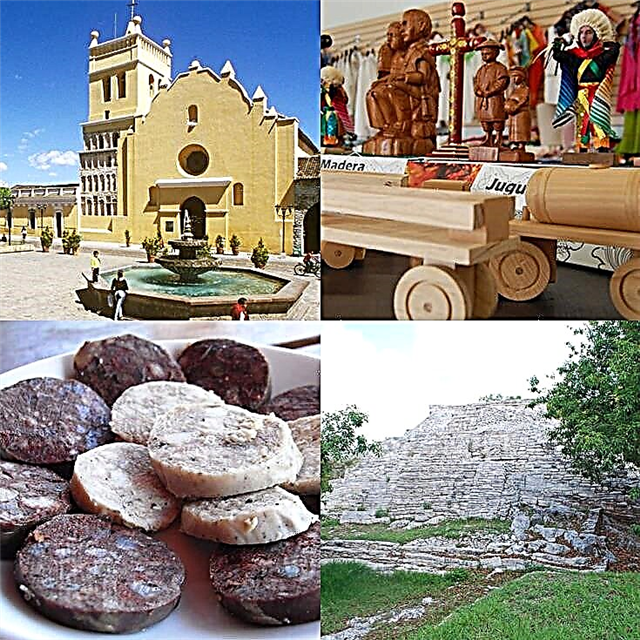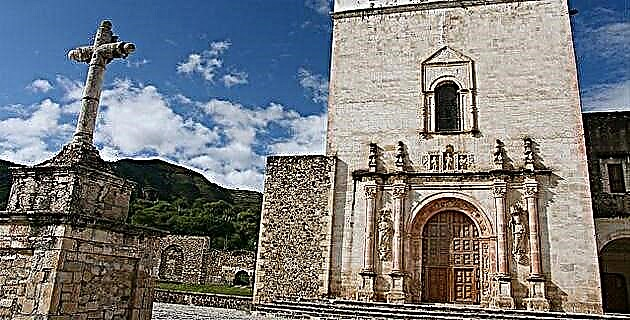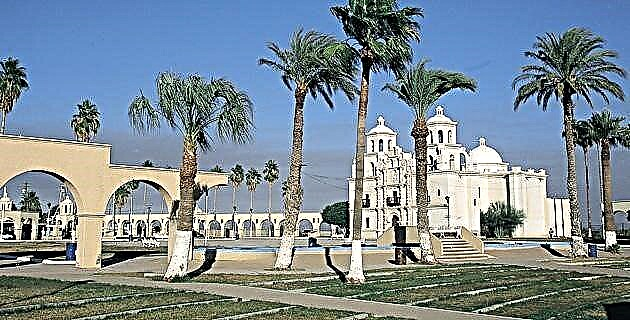
The Carmelite order arose early when in the year 1156 the crusader Bertoldo, taking advantage of the fact that groups of retired men from the world had lived on Mount Carmel since the time of the prophet Elijah, founded with them an association of hermits who led a monastic life.
That association received an austere rule from Pope St. Albert in 1209 and years later it became a religious order. Then they emigrated to Europe under the name of the Order of the Blessed Virgin of Mount Carmel and under the direction of Simon Stock they spread throughout the old continent. In the 16th century, Santa Teresa de Jesús began the reform of this community, which by then was in a state of total relaxation, beginning with the sisters and continuing with the friars. It was the Carmelite branch that accepted the reform of the saint of Avila which, shortly after her death, passed to New Spain.
THE CARMELITE ORDER DISCALED IN MEXICO
Through agencies of the Marquis of Villa Manrique, accompanied by him and sent directly by Father Jerónimo Gracián, the Carmelites arrived in Ulúa, aboard the ship “Nuestra Señora de la Esperanza”, on September 7, 1585, entering the city of Mexico eleven religious, on October 18. This expedition to the Indies had a strictly missionary character and they had to make a foundation in these newly discovered lands.
They were first granted the hermitage of San Sebastián, an indigenous neighborhood, administered until then by Franciscans, and later they went to their own convent in the Plaza del Carmen.
Its expansion through New Spain was as follows: Puebla in 1586; Atlixco in 1589; Valladolid (today Morelia) in 1593; Celaya in 1597; where they established their house of studies for the religious. They followed Chimalistac, San Angel; San Luis Potosí, San Joaquín, Oaxaca, Guadalajara, Orizaba, Salvatierra, the Desierto de los Leones and that of Nixcongo, in the vicinity of Tenancingo, both retirement or “desert” houses whose ultimate purpose was to comply with the precepts of silence unaltered, continuous prayer, vigil, constant mortification, remoteness from worldly pleasures and communities, and hermit life. The first provincial of this order in Mexico was Father Eliseo de los Mártires.
THE CARMELITE ORDER OF BARE WOMEN IN MEXICO
The first female monastery was established in the city of Puebla on December 26, 1604 and the founders were four Spanish women: Ana Núñez, Beatriz Núñez, Elvira Suárez and Juana Fajardo Galindo, in religion called Ana de Jesús, Beatriz de los Reyes and Elvira de San José respectively.
The first Carmelite convent in Mexico City was that of San José, founded by Inés de Castillet, in the Inés de la Cruz religion, who after countless vicissitudes had to convince some Conceptionist nuns to follow the Teresian reform. After the death of Inés, several years had to pass for the convent to be finished. The town helped its construction with lismonas, the oidor Longoria provided wood for the work, Mrs. Guadalcazar donated the furniture and habits and in 1616 the nuns were able to reside in their convent.
The monastery, dedicated to Saint Joseph, was known by the name of Santa Teresa la Antigua and the first novice was Beatriz de Santiago, known as Beatriz de Jesús. Shortly after, the convents of Santa Teresa la Nueva, the Monastery of Nuestra Señora del Carmen in Querétaro, that of Santa Teresa in Durango, that of the holy family of Morelia and that of Zacatecas were founded.
THE AUSTERA CARMELITE RULE
The rule of this order, one of the most austere known, has like almost all congregations, as its first vow that of obedience and then those of personal poverty, chastity and closure. The fasts and abstinences are daily, the prayer is contemplative, almost continuous, since it occupies most of the day. At night, they do not have to interrupt their sleep for miatines, since they do it at nine at night.
Faults in any of the four vows were punished with great severity, ranging from a reprimand before the community to a spanking on the bare back or temporary or perpetual imprisonment.
So that possible conversations would not interrupt the monastic silence, the rules prohibit the labor room. The lips of the nuns should be sealed and open only to speak in a low voice and holy things or to pray. The rest of the time the silence must be total.
The convent was governed by the prioress and the council, the election was free and provincial and they should be elected by nuns with black veils, that is, those who had professed two years ago and the position lasted three years without reelection. The number of religious was twenty, 17 with black veils and three with white veils. There was no servitude as the rules authorized only one errand and one sacristan.











